Novo Nordisk, Eli Lilly fall after Trump comments on weight loss drug pricing
Introduction & Market Context
Bank Rakyat Indonesia (IDX:BBRI) presented its first half 2025 financial update on July 31, highlighting the bank’s strategic focus on strengthening its deposit franchise and digital initiatives amid challenging economic conditions. The presentation comes as Indonesia’s GDP growth is expected to remain stable at 4.78% in Q2 2025, while the middle and lower segments of the economy continue to face headwinds with purchasing power remaining below pre-pandemic levels.
The bank’s shares have shown remarkable long-term performance, with a 4,400% increase since its IPO, significantly outpacing the Jakarta Composite Index’s 1,117% growth over the same period. Currently, domestic investors hold 69.89% of BBRI shares, while foreign investors account for 30.11%.
As shown in the following chart of BBRI’s share performance versus the market index:
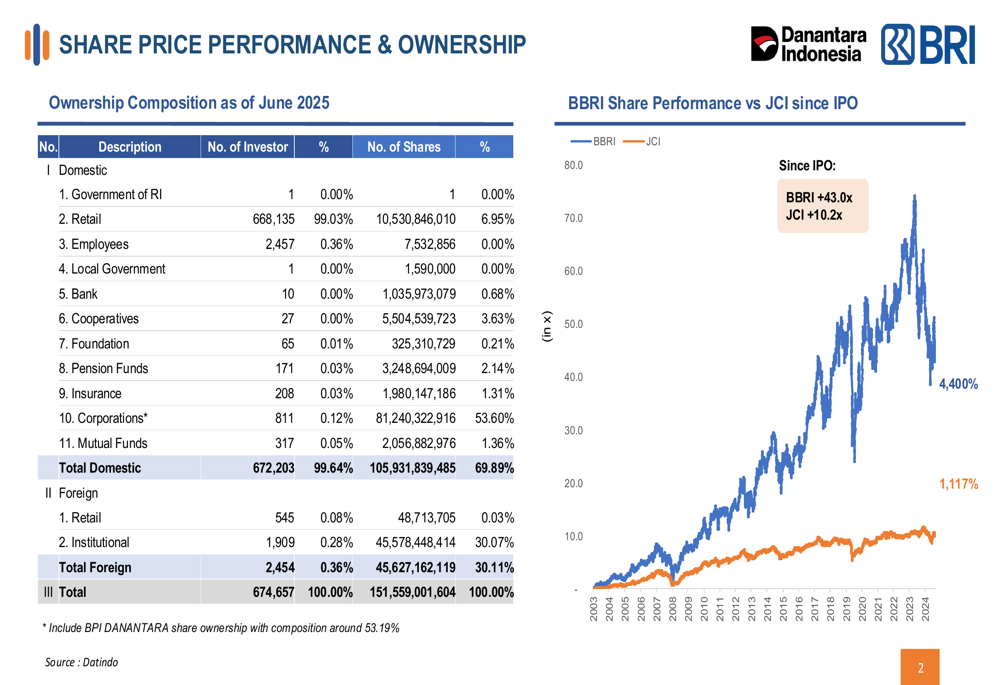
Quarterly Performance Highlights
BRI’s presentation emphasized deposit growth outpacing loan expansion, a notable shift from previous quarters. This aligns with the bank’s Q1 2025 earnings report, which showed a 9.7% quarter-on-quarter decline in net profit despite a 5.5% year-on-year increase in total assets.
The bank has maintained its focus on its core MSME (Micro, Small, and Medium Enterprises) lending, which continues to represent the majority of its loan portfolio, while corporate lending remains within targeted ranges. This portfolio distribution is illustrated in the following breakdown:
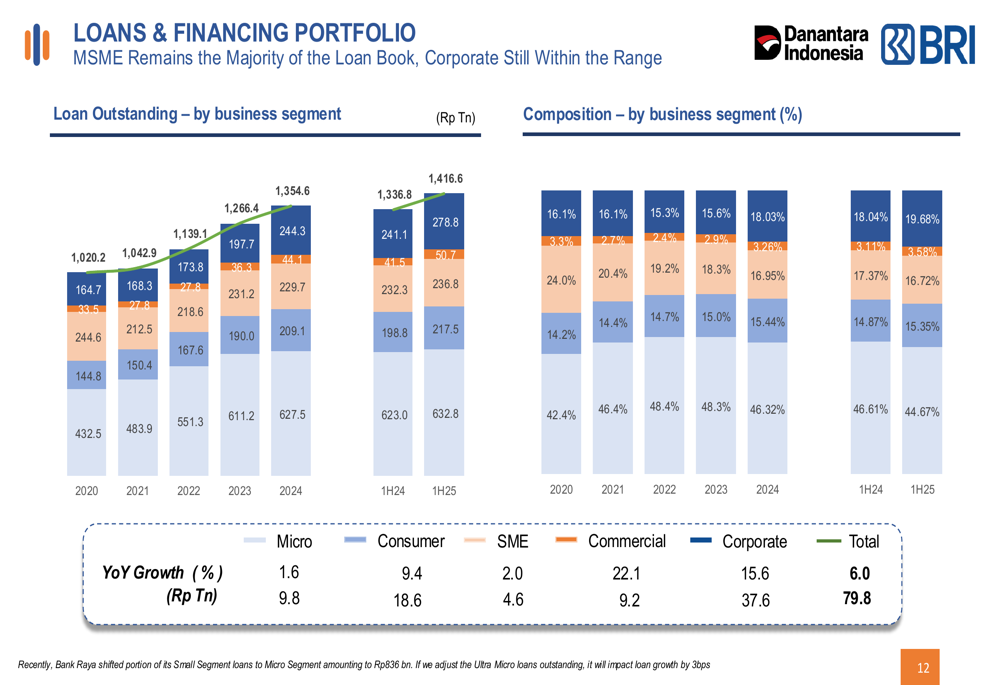
Deposit composition has shown improvement, with retail savings increasing year-over-year and contributing to a greater Current Account Savings Account (CASA) ratio. This strategic shift appears to be helping the bank manage funding costs in the current economic environment.
The following chart illustrates the improving deposit composition:
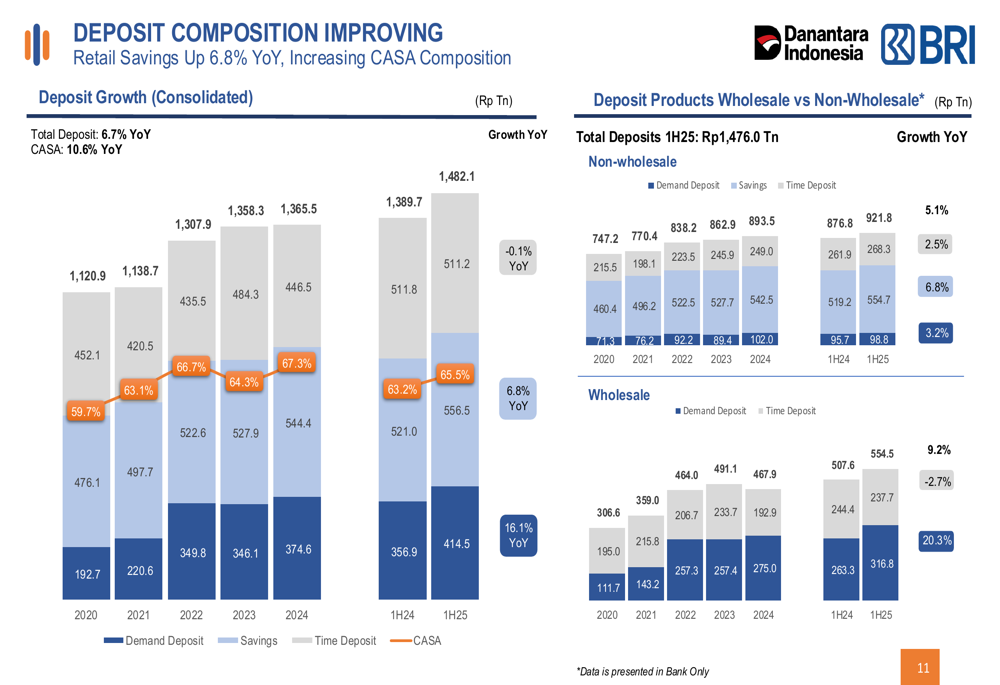
Strategic Initiatives
BRI outlined its core strategy focused on "healthier and sustainable growth" through two key initiatives: transforming the funding franchise and revamping existing core businesses while building new sustainable ones. The bank is strengthening regional offices, transforming retail CASA and wealth management, tapping into emerging affluent segments, and refreshing its brand.
Digital transformation continues to show positive results, with significant growth in monthly active users and transaction values. Sales volume increased by 27.2% from 1H24 to 1H25, while sales volume per merchant rose by 62.5%. The number of productive merchants grew by 14.3%, despite a 21.7% decrease in total merchant count, suggesting a focus on quality over quantity.
The following metrics showcase the bank’s digital transformation progress:
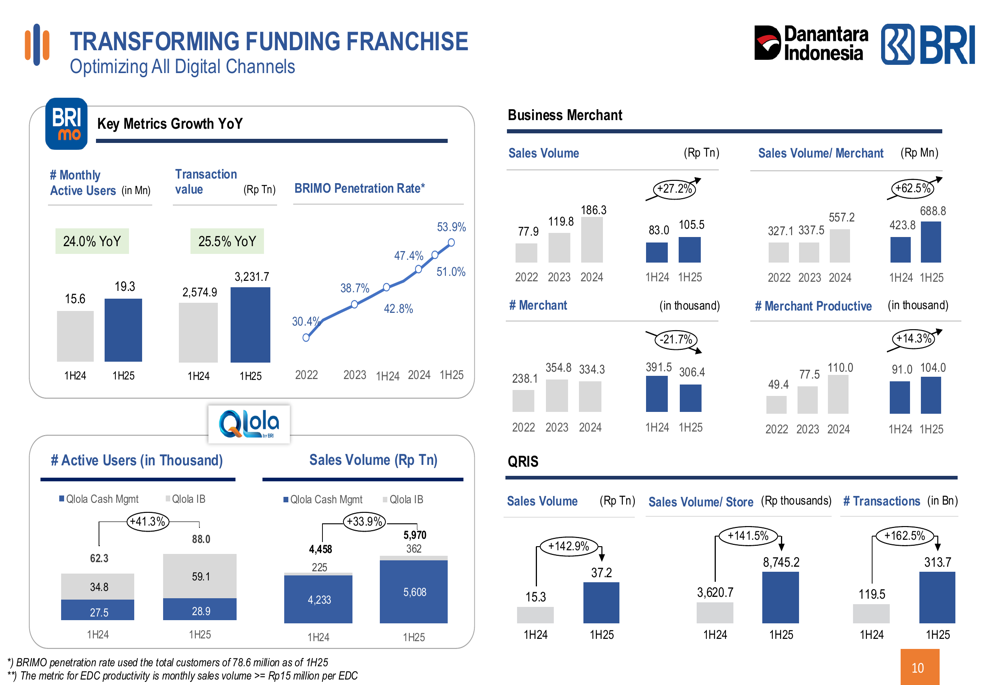
Asset quality has become a key focus area, with initiatives aimed at strengthening credit discipline and reducing non-performing loans (NPLs). This aligns with concerns mentioned in the Q1 earnings call about asset quality affecting return on assets and equity. The bank is enhancing loan officers’ competencies, improving business processes, and strengthening risk management through enhanced pre-screening and underwriting.
Detailed Financial Analysis
The Indonesian banking industry has shown positive trends in key performance indicators, with growth in assets, loans, and deposits, as illustrated in the following industry overview:
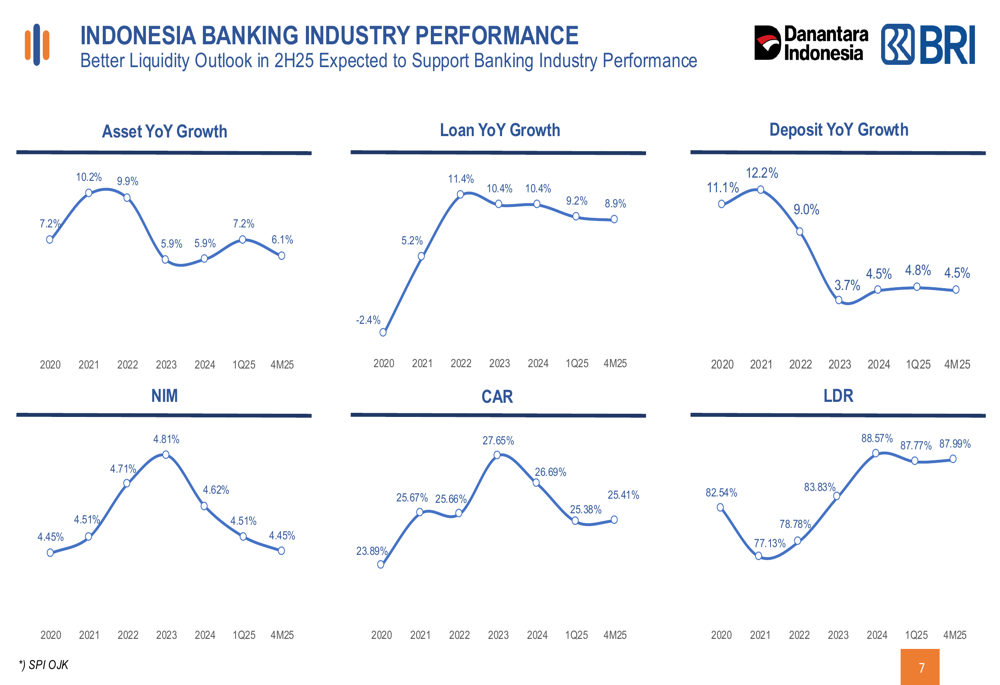
BRI’s presentation highlighted that deposit growth has outstripped loan growth, driven by increasing CASA ratios. This trend represents a shift from the bank’s traditional focus on aggressive loan expansion and suggests a more cautious approach amid economic uncertainty.
The bank is also benefiting from higher contributions from its subsidiaries, which is helping to mitigate the impact of margin pressure and NPL challenges. This diversification strategy appears to be supporting overall performance despite headwinds in the core banking business.
The following chart shows how subsidiaries are contributing to overall performance:

Forward-Looking Statements
The macroeconomic outlook presented by BRI suggests that while GDP growth remains stable, challenges persist for the middle and lower segments of the economy. The bank highlighted that MSME business activity has shown a modest decline as purchasing power remains below pre-pandemic levels.
The following economic metrics provide context for BRI’s strategic direction:
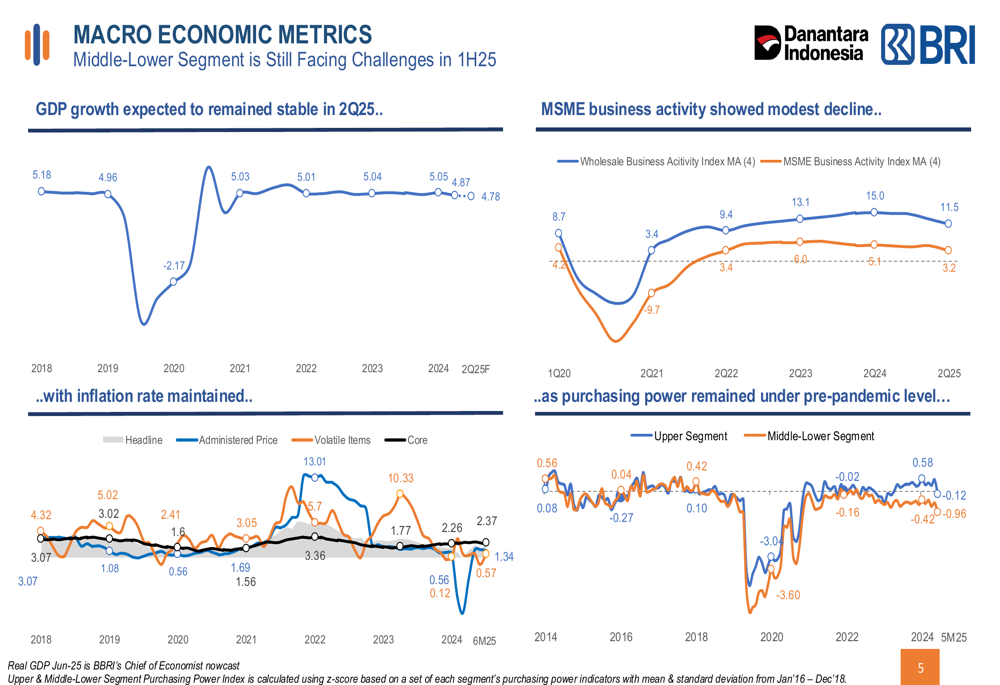
Liquidity in the banking system appears to be stabilizing, with the Indonesian Rupiah showing less volatility against the US Dollar. The presentation suggested that monetary easing may be possible, which could support economic activity and potentially benefit BRI’s lending business.
The following chart illustrates the liquidity dynamics in the banking system:
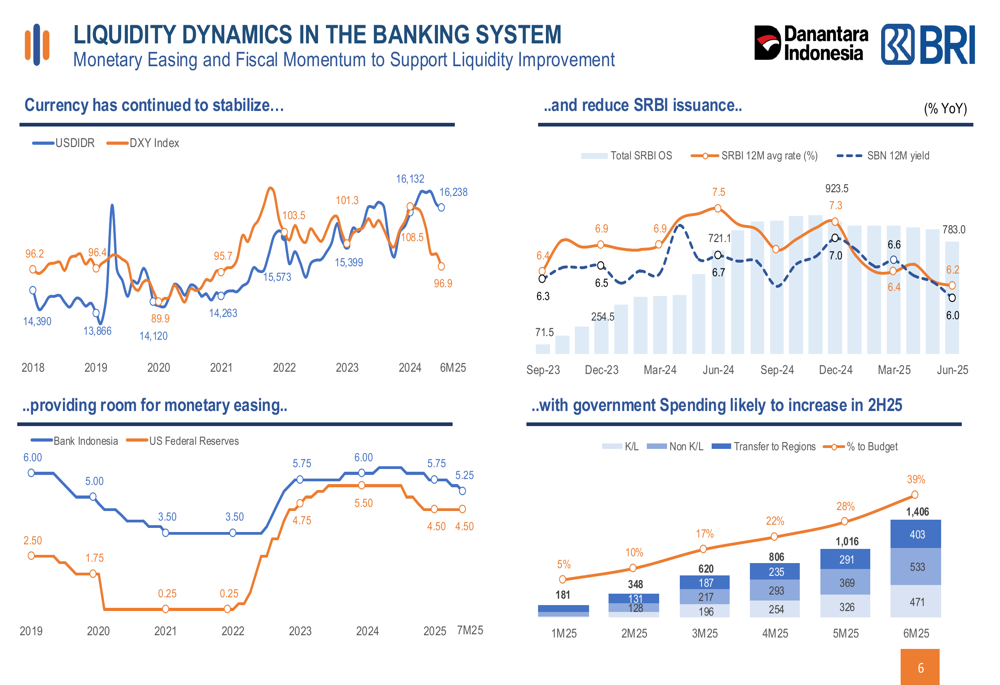
BRI’s focus on retail funding and asset quality initiatives indicates a strategic pivot toward more sustainable growth rather than aggressive expansion. This aligns with the guidance provided in the Q1 earnings call, where management projected loan growth of 7-9% and aimed to keep NPLs below 3%.
As BRI navigates the current economic environment, its emphasis on digital transformation, deposit franchise strengthening, and risk management improvement appears designed to position the bank for more sustainable long-term performance, even as it faces near-term profitability challenges.
Full presentation:
This article was generated with the support of AI and reviewed by an editor. For more information see our T&C.
